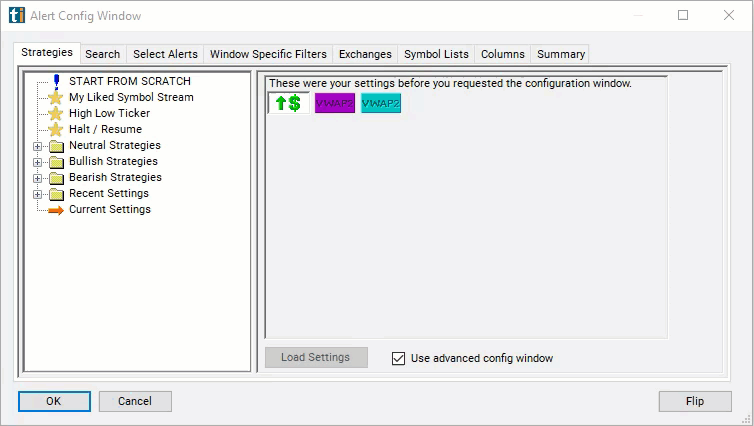VWAP 3
Table of Contents
Understanding the VWAP 3 Filter
Our VWAP 1, 2, 3, 4 and 5 filters provide the 5 anchored VWAP values in dollars.
The VWAP 3 filter refers to the Volume Weighted Average Price calculated over a specific period. In this case, over the last 3 trading days. VWAP is a trading benchmark that gives the average price a stock has traded at throughout the trading day, weighted by volume.
Here's how the VWAP 3 filter works:
Calculation of VWAP: VWAP is calculated by multiplying the price of each trade by the volume of that trade, summing up these values, and dividing the total by the cumulative volume traded over the period. In the case of VWAP 3, it represents the VWAP over the 3 trading days.
Application in Trading: Traders use VWAP 3 as a reference point to assess the average price levels at which significant trading activity has occurred over the last 3 trading days.
Intraday Analysis: While VWAP is typically calculated throughout the trading day, VWAP 3 provides a longer-term perspective on the average price weighted by volume over the previous 3 trading days. Traders can monitor VWAP 3 throughout the current trading day to gauge price levels relative to this longer-term average.

VWAP 3 Filter Settings
The settings of each Trade Ideas filter are defined in the Window Specific Filters Tab located in the Configuration Window of your Alert/Top List Window.
Here is how to setup the filter in your configuration window:
- Set the min value to $5 and the max value to $20 to filter for stocks with a VWAP within the range of $5 to $20 over the past 3 days.

Using the VWAP 3 Filter
Several trading strategies can be employed with the VWAP 3 filter. Here are a few examples:
Mean Reversion Trading: Identify stocks that have deviated significantly from their VWAP over the past three days. Enter contrarian positions when the current price is below the VWAP, anticipating a reversion to the mean. Similarly, consider short positions when the price is above the VWAP.
Trend Confirmation: Use the VWAP 3 filter to confirm the direction of the trend. If the current price is consistently above the VWAP over the past three days, consider entering long positions, expecting the trend to continue. Conversely, if the price consistently trades below the VWAP, consider short positions.
Breakout Trading: Look for stocks where the current price breaks out above or below the VWAP range established over the past three days. Enter long positions if the price breaks above the VWAP range, anticipating a continuation of the uptrend. Conversely, enter short positions if the price breaks below the VWAP range, expecting a continuation of the downtrend.
VWAP Pullback: Wait for the price to pull back to the VWAP after a significant move away from it. Enter long positions if the price pulls back to the VWAP from below, or short positions if it pulls back from above, expecting a reversal or continuation of the trend.
FAQs
How does the VWAP 3 filter work?
- The VWAP 3 filter calculates the VWAP over the past three trading days for each stock. It allows traders to filter stocks based on whether their current price is within a certain range relative to the VWAP over this three-day period.
What does it mean if a stock's current price is above the VWAP 3?
- If a stock's current price is above the VWAP 3, it indicates that the stock's current price is trading above the average price it has traded at over the past three days. Some traders may interpret this as a bullish signal, suggesting potential upward momentum.
Can the VWAP 3 filter be used in combination with other indicators?
- Yes, traders often use the VWAP 3 filter in conjunction with other technical indicators or trading strategies to confirm signals or identify potential trading opportunities. Combining the VWAP 3 filter with other indicators can provide a more comprehensive analysis of market conditions.
Filter Info for VWAP 3 [VWAP3]
- description = VWAP 3
- keywords = Single Print
- units = $
- format = p
- toplistable = 1
- parent_code =




